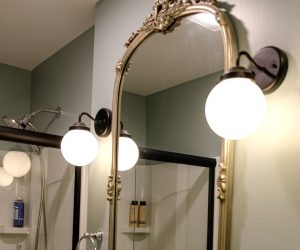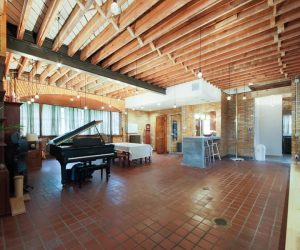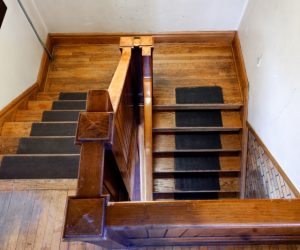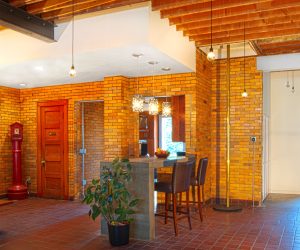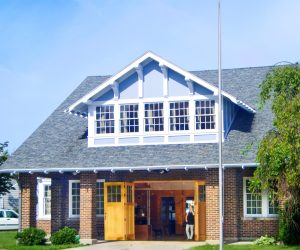Historic Remodels
Lansing is a historic town, and one result of that is a large stock of homes and properties that were built a long time ago. It’s crazy to think about but if your house was built before 1924, then it is over 100 years old already! That’s a long time for the same structure to last, especially without the use of modern materials and finishes that better withstand the test of time. Due to many economic and social factors, homes in Lansing’s historic neighborhoods can be purchased for a low price but are often found in poor or dilapidated condition.
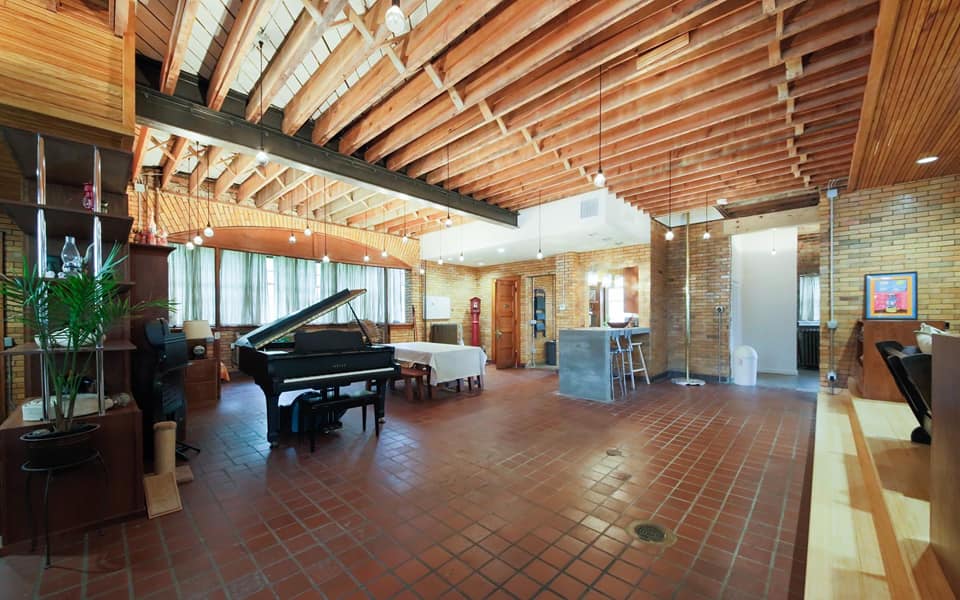
Luckily, the experts at R.L. Rider Remodeling know exactly how to restore and rejuvenate your historic home. While many restoration specialists stop at cosmetic finishes, we take it a step further on our projects and suggest modernizing the infrastructure such as plumbing, HVAC, and wiring, too. Without taking the time to update these essential systems, the house has no “future-proofing.” It may appear beautiful with fresh, clean drywall and paint, but there are likely problems lurking in the decades-old “guts” of the house. Then if trouble does hit you have to tear out all the nice finishes, investigate/repair the issue, and put it all back again. Doing everything at once when the walls are open is undoubtedly the most efficient and cost-effective route.
R.L. Rider Remodeling had the opportunity to complete a unique restoration of one of Lansing’s historic firehouses. The building was completely converted into a residence as part of a 7-month remodel that helped preserve historic details and add modern conveniences. Check out the photo tour from the 2016 Parade of Homes Featured Remodel:
Preserve the Past, Plan for the Future
Our approach to historic remodeling has served our clients effectively – we call it preserving the past and planning for the future. You bought your home for the character and unique beauty, not for the headache of solving problem after problem. Without a proper restoration it’s like playing Whack-a-Mole with what issue is going to rear its head next. This sheetrock is crumbling, the floor is sagging in the kitchen, the upstairs shower never gets hot, the front porch light always flickers, the list could go on and on. Your home must be functional and livable, not just a pretty façade.
Preserving the unique character, keeping historically accurate features, and living in a piece of history are all parts of the great experience of living in a historic remodel! To avoid the types of problems mentioned above, we highly recommend updating the energy and efficiency systems – the guts of the house. Revitalizing a historic structure allows you to keep the finish accurate and beautiful, preserve the original artistry and character, and live in a home with modern conveniences and efficiencies.
Options for Historic Houses
When searching around any Lansing real estate listings, you will see groups of homes built in the early 1900s and all the way back to the 1800s. That’s two centuries removed from the modern day! Before you renovate or even purchase one of these homes it is best to have a plan of action in place. We can advise you more thoroughly on what your plan should be, but the basic approach we take for historic projects is to Identify – Investigate – Plan & Consult – Choose.
We identify the time period of the home and figure out the building materials that best reflect that era. Investigation serves to tell you if there are any hidden problems to look out for such as wood rot, poorly run systems, outdated materials, etc. Planning and consulting with our team of historic experts and trade partners allows us to give you the maximum amount of info possible before you make any big decisions. Then, it is time to choose what to do based on the best information available. Do you decide to renovate the home with a full-gut of the interior and all historically accurate material? Do you decide to level the place and start fresh with a customized home? Do you pick away at it on the weekends for the ultimate DIY project? Or do you say, “that’s way too much hassle, I want to find a newer place to live.” Whatever you choose, R.L. Rider Remodeling is happy to walk you through the entire process!
Challenges for Historic Remodels
Working on older houses or buildings does come with its own unique set of challenges distinct from remodeling a newer home. Fortunately, we have enough experience with historic restoration to confidently guide you through the process while minimizing unforeseen issues. This ensures you are always up to date with the most accurate knowledge and advice to make a well-informed decision for your project. Some of these problems can be dangerous, which is why we suggest you use an expert and not attempt to do it yourself! Here’s a brief list with some problems we see often, and an explanation of how we are set up to handle each issue.
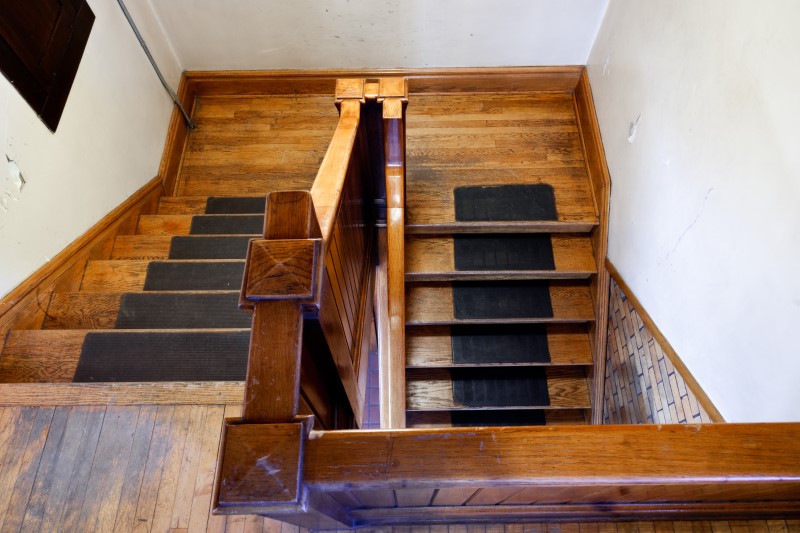
Dangerous Building Materials
The first thing a lot of people think of when hearing about a historic remodel is asbestos and other dangerous building materials. While asbestos-containing materials haven’t been used on residences since the 80s, that doesn’t help much if your house was built 60 years prior to that! And that doesn’t include lead-based paint and the remediation necessary, or any other harmful products such as Zonolite insulation that we might come across.
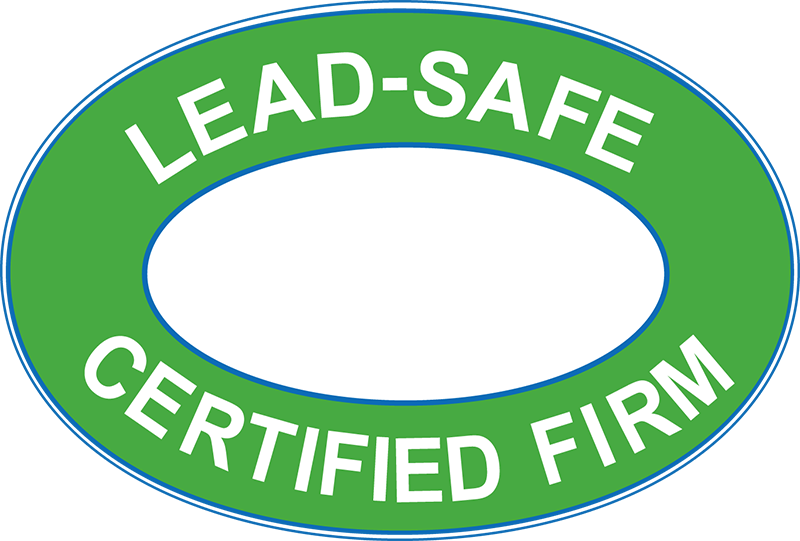
R.L. Rider Remodeling is a lead-safe certified firm with trained staff ready to handle any remediation needed to get your home safe and livable. We test and identify the material in question, protect and limit the area’s exposure, the remove and dispose of it offsite. DO NOT attempt to work on or around such materials by yourself without proper training – you could risk your and your family’s health.
Outdated Construction Practices/Hidden Damage
Many tradesmen take pride in his or her work and may take it to the extremes of claiming theirs is the best and only way to do it! Like any other industry this may not be the case – there are many good (and terrible) ways to accomplish a given task, with many skilled (and unskilled) workers ready to perform the actual labor. Also, like other industries, construction has built a collective body of knowledge of best practices that tell us how to do the job safely and effectively. This obviously takes time, and any project completed before a given method is introduced won’t employ that newer, better method.
Construction methods and techniques have evolved with the advent of new technologies, equipment, and knowledge. Houses built without a lot of this new knowledge may use poor techniques that we now know can cause major issues. If a house that was built in the 1930s is compared to one built in the 1970s, you would in theory see the “technology” differences from a 40-year timespan. The home built in the ‘30s wouldn’t even have use of a cordless drill, while a builder would be challenged without it the ‘70s.
An example that we often see when visiting homeowners is the really poor quality and amount of insulation. Builders didn’t have heating and cooling data from millions of homes in every climate available to accurately calculate what a given job was going to take. When we see (or feel) the result of their work now it is obvious – more and better insulation is needed to keep the room’s temperature steady. Another example is the shedding of water away from the home’s structure – lots of new products and installation techniques are miles ahead of what is probably currently on your house.
Matching Original Materials
So many factors affect the material chosen for your home: budget, availability of supplies, geographic region, contractor’s preference, etc. Just imagine a century ago when your house was built and all the variables then. Further complications arise when we factor in the beating that weather and time have doled out to the installed product. Not to mention that the 10 families before yours in the house had their own ideas and vision about what improvements to make. All of this taken together means that it can be difficult to impossible to precisely match what is already on the home.
There are a few options to approach the issue of matching material. One way is to re-use the existing material if it is good enough condition. We can clean it up and refinish it to give it a truly authentic match. Another is to demolish all the material in question and replace it with brand new. Take siding for example – there are lots of modern vinyl or metal products that can get an old-fashioned wood look, plus you get all the modern advantages such as no rotting and minimal maintenance. A third way is a combination of refurbishing the existing material as nicely as possible, and then having trade experts match the rest to get as close as possible. This could be accomplished by painting or getting period-accurate windows. What it comes down to is your personal preference and how much you’d like to invest. We are comfortable building almost anything you can dream up and will give you options with budgetary guidelines to help you make the best decision for your home.
Typically, we would recommend going with all new, modern material with a historically accurate look. The maintenance is just so much easier, and you know you are getting a solid product with a great warranty. This serves to future proof your home a little more as well. If something happens to damage your home, like a storm or an accident, what happens when you need to replace the material? While we can hunt down anything, it is a lot easier to replace a new, in stock material versus a specialty item. Just another factor to keep in mind.
Project Development
Working with Historic Organizations
Be careful about jumping into a neighborhood with a historic society or commission, you might be in for restrictions on how your house can look. This can make your remodel more costly and take longer as we navigate red tape, regulations, building codes, and meetings to determine what can be built and in what manner.
Having worked with many historic preservation societies, including East Lansing’s Community Development, we are well-versed in the administrative duties required of a contractor performing a historic overhaul. You will not have to attend any meetings or discussions unless you want to. Even with the best planning, be aware that many of your ideas might not be permissible under the jurisdiction’s rules. One example we’ve seen is incredibly specific rules on how a window can look and be constructed – eventually it was narrowed down to a single line manufactured by one company, which also happened to be wildly expensive. We will assist you every step of the way but know some things may need to be compromised.
Space Constraints and Additions
Houses used to be much smaller than the average home size today. Someone who grew up in the suburbs or country with a lot of square footage may be shocked at how small of a space you get when buying a historic house in town. Lot space further restricts your options and sends claustrophobics running the other direction! An interior update to open up the floor plan might alleviate your pain, but the only way to add substantial square footage is to add on to your home.
An addition on a historic home almost always brings up issues such as the ones listed above (e.g. matching building materials on the existing and new parts of the home) but that’s no problem for R.L. Rider Remodeling. We will work diligently to maximize the usage of your lot or land, plan the most efficient path of expansion, and handle the entire process from planning to punchlist. These are large-scale projects and take a lot of planning to keep you and your house functioning during the process. Let us give you the home of your dreams on your terms.
Not only maintaining but preserving and even enhancing historic homes around Lansing is a job that R.L. Rider Remodeling approaches with great pleasure. We seek to preserve the integrity and legacy, while also making it viable for the next generation to use and enjoy, too. If you are ready to get started or have a project you’d like to discuss, please call us at 517-487-3713 or fill out the contact form on our website!

